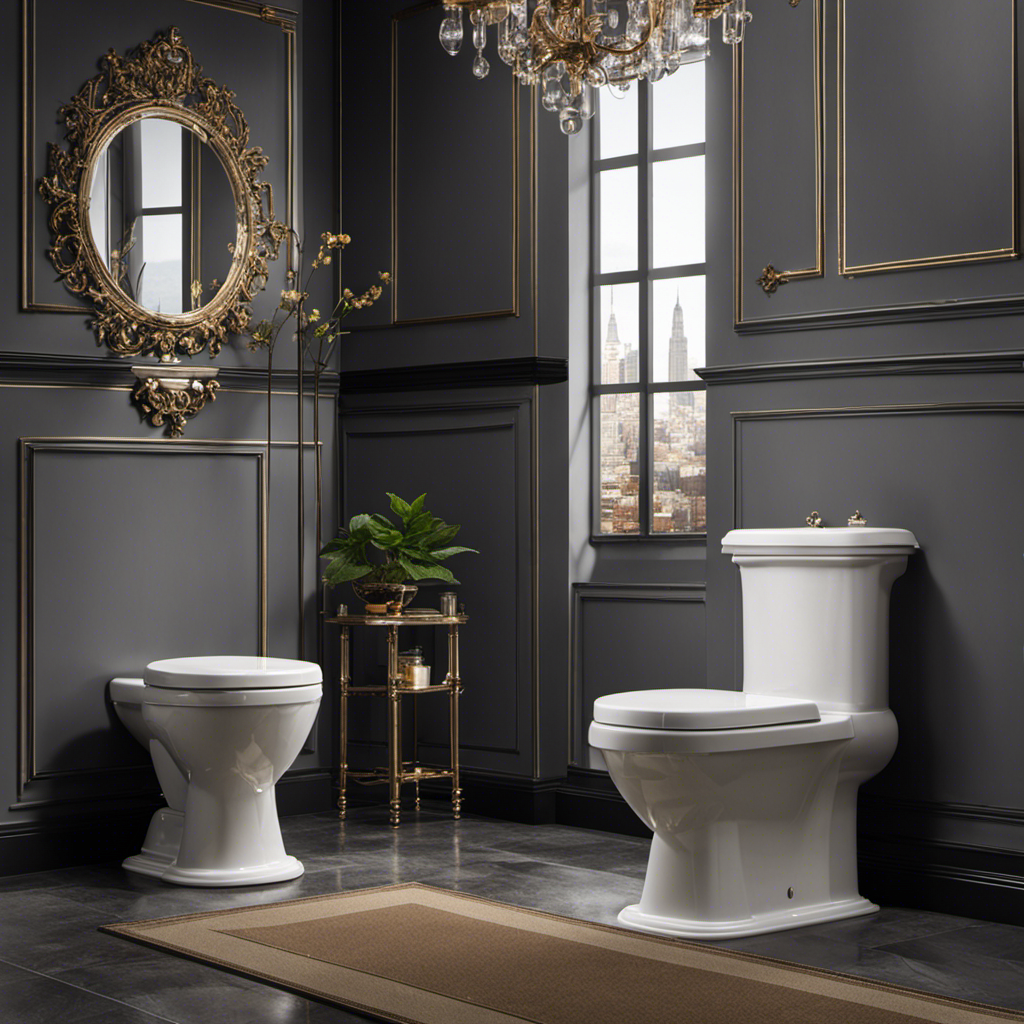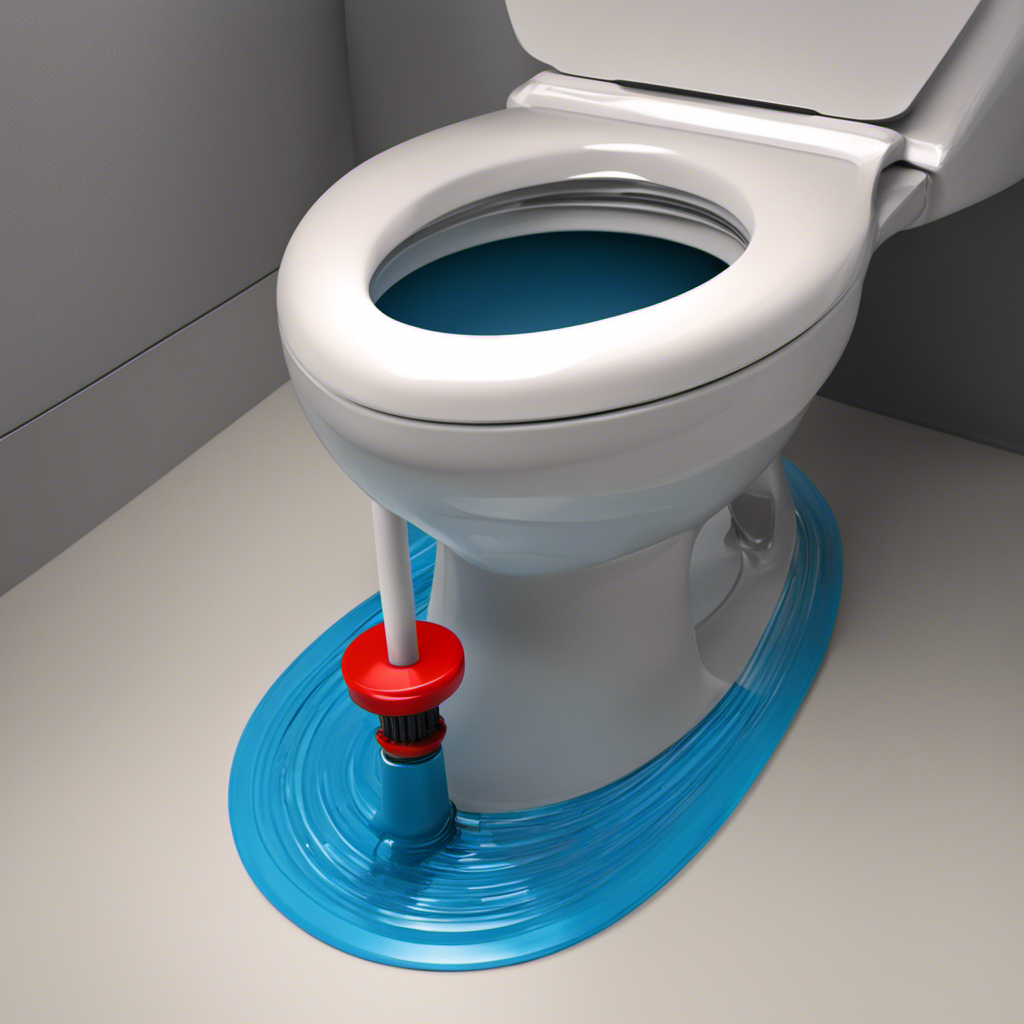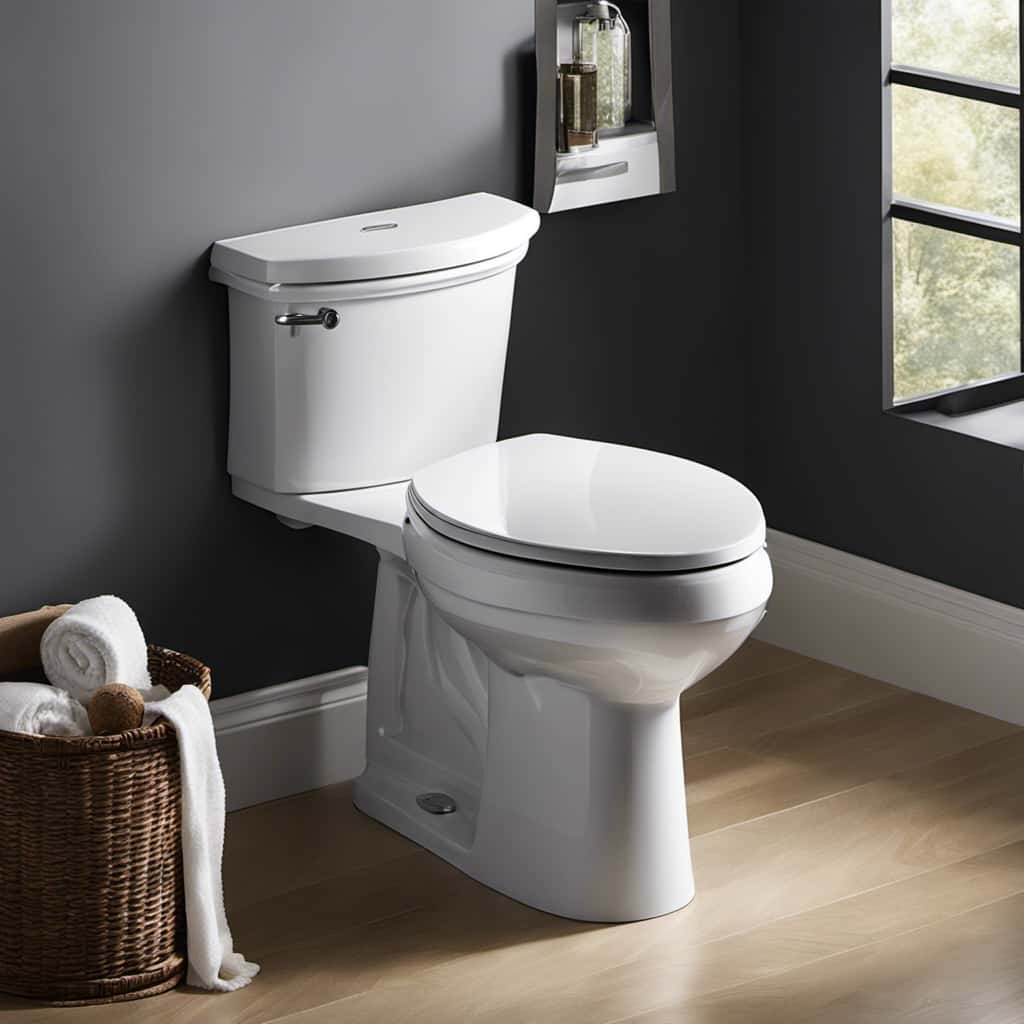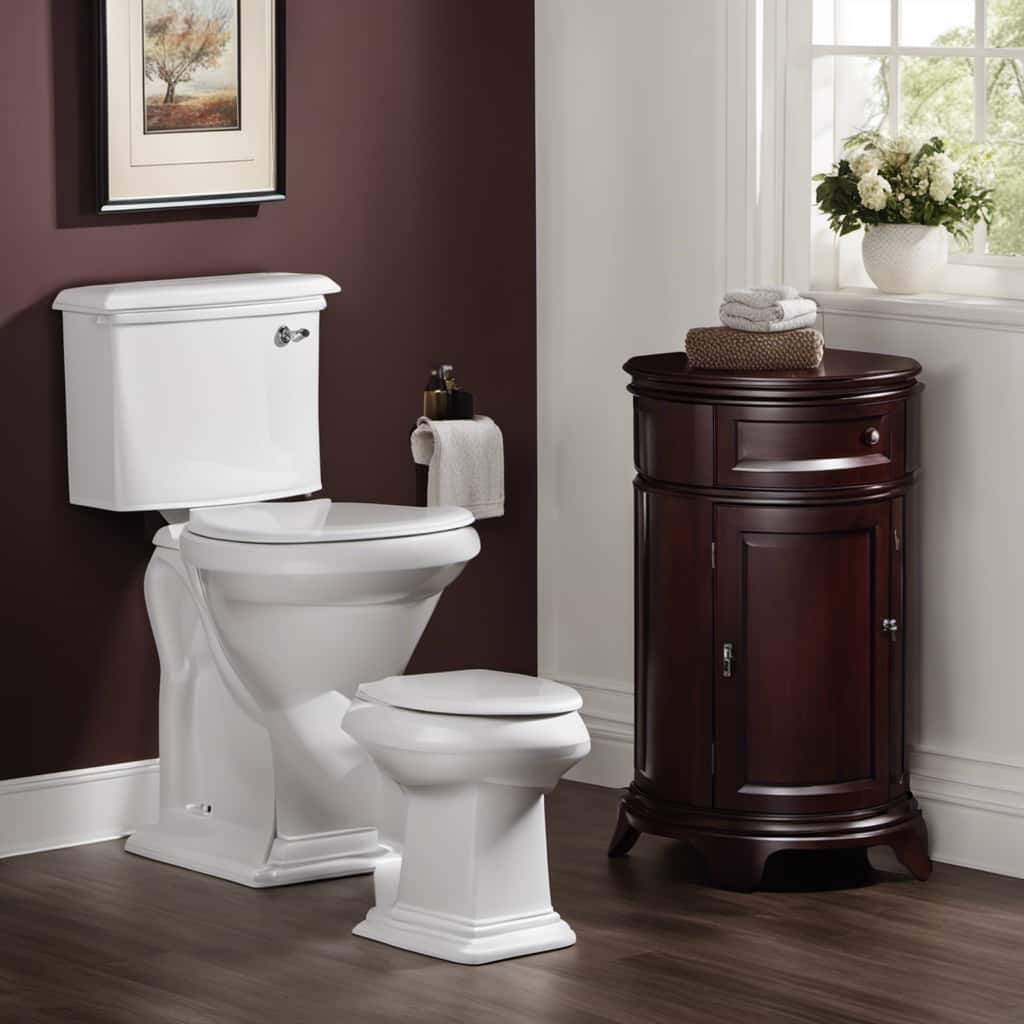I’ve always been conscious of making environmentally friendly choices, and one area where I’ve recently focused my attention is on toilets.
When it comes to efficiency, the decision between low flow and high flow toilets is crucial. High flow toilets, with their higher gallons per flush (GPF), are not only wasteful in terms of water usage, but also in terms of money.
On the other hand, low flow toilets, with their improved performance and reduced clogging, offer a more efficient and powerful option.
So, let’s dive into the details and explore the pros and cons of each choice.
Key Takeaways
- GPF refers to the amount of water used to flush a toilet.
- High GPF toilets are wasteful and not environmentally friendly.
- Low flow toilets (1.28/1.6 GPF) are efficient and powerful.
- Dual flush toilets offer both a half flush and a full flush option.
The Importance of Water Efficiency in Toilets
I believe it is crucial to prioritize water efficiency when choosing a toilet. This not only saves water but also reduces our environmental impact.
Water scarcity has a significant impact on toilet efficiency. It forces us to reconsider our water usage.
Government regulations play a vital role in promoting water efficient toilets. The Energy Policy Act of 1992, for example, regulates toilets to use no more than 1.6 gallons per flush (GPF). This regulation aims to conserve water and reduce wastage.
By adhering to these regulations, manufacturers have developed low flow toilets that use as little as 1.28 GPF. These toilets are designed to maintain performance while minimizing water consumption.
The combination of government regulations and technological advancements has led to the development of water efficient toilets that effectively address the issue of water scarcity.
Understanding the Difference: Low Flow Vs. High Flow Toilets
Water consumption varies between low flow and high flow toilets.
Low flow toilets, with a GPF of 1.28 or 1.6, offer several advantages. Firstly, they are more environmentally friendly and save water. Secondly, they are cost-effective, as they reduce water usage and lower utility bills. Thirdly, modern low flow toilets have improved performance and are less likely to clog. Lastly, they are WaterSense certified, ensuring high quality and water efficiency.
On the other hand, high flow toilets, with a GPF higher than 1.6, have some disadvantages. They are wasteful, not environmentally friendly, and can lead to higher water bills. Additionally, they may not meet current water efficiency standards.
Therefore, when choosing between low flow and high flow toilets, it is essential to consider these advantages and disadvantages to make an informed decision.
Exploring the Performance Factors of Low Flow Toilets
When evaluating the performance of low flow toilets, it is important to consider factors such as flush power, noise level, and clogging.
Flushing power is a crucial aspect to consider when comparing the performance of low flow toilets. These toilets are designed to use less water while still providing a powerful flush. The reduced water volume may raise concerns about clogging, but low flow toilets are specifically engineered to prevent blockages. They feature improved flushing mechanisms and larger trapways to ensure efficient waste removal.
Additionally, low flow toilets often produce less noise compared to their high flow counterparts, making them more suitable for residential settings.
Overall, low flow toilets offer impressive flushing power and reduced clogging, making them a reliable and efficient choice for any bathroom.
Benefits and Drawbacks of High Flow Toilets
One important consideration when it comes to high flow toilets is their water wastage. High flow toilets have a higher gallons per flush (GPF) compared to low flow toilets.
Here are the pros and cons of high flow toilets:
-
Pros of high flow toilets:
- More powerful flushes, which can help prevent clogging.
- Some people prefer the higher water volume for a thorough cleaning.
-
Cons of high flow toilets:
- They use more water, contributing to water wastage and higher water bills.
- Not environmentally friendly, as they consume more water.
Comparing water usage, high flow toilets use more water per flush compared to low flow toilets. While high flow toilets may offer a more powerful flush, they come with the drawback of greater water consumption and potential water wastage.
It’s essential to weigh the benefits and drawbacks before deciding on the type of toilet that best suits your needs.
WaterSense Certification: A Guide to Environmentally Friendly Toilets
I prefer toilets that are WaterSense certified because they are environmentally friendly and efficient. WaterSense certification ensures that toilets use less water, reducing their impact on the environment and saving money on water bills. The Environmental Protection Agency (EPA) independently tests and certifies these toilets, guaranteeing their water efficiency. To help you understand the benefits of WaterSense certified toilets, here is a comparison table:
| Toilet | Water Consumption (GPF) |
|---|---|
| WaterSense Certified | Less than 1.6 |
| Non-WaterSense Certified | More than 1.6 |
As you can see, WaterSense certified toilets use less water, meeting the EPA’s standards for water conservation. By choosing a WaterSense certified toilet, you contribute to water conservation efforts without compromising on performance. These toilets are suitable for both residential and commercial use, providing a sustainable and efficient solution to reduce toilet water consumption.
Personal Preference: Factors to Consider When Choosing GPF
For me, personal preference plays a significant role in determining the GPF of a toilet. When choosing the GPF for a toilet, there are several factors to consider based on personal preferences. These include aesthetics and design, budget and cost effectiveness.
-
Personal preferences: aesthetics and design: Some individuals prioritize the appearance of their bathroom and prefer toilets that complement the overall aesthetics and design of the space. They may opt for sleek and modern designs or classic and traditional styles.
-
Personal preferences: budget and cost effectiveness: Budget-conscious individuals consider the cost of the toilet and its long-term cost effectiveness. They may choose a toilet with a higher GPF if it is more affordable upfront, or they may opt for a low flow toilet to save money on water bills in the long run.
Ultimately, personal preferences play a crucial role in determining the GPF of a toilet, whether it be based on aesthetics and design or budget and cost effectiveness.
Dual Flush Toilets: An Efficient Alternative for Water Conservation
Opting for a dual flush toilet provides an efficient alternative for conserving water. When comparing the cost of dual flush toilets to low flow toilets, it’s important to consider the long-term savings.
While dual flush toilets may have a higher upfront cost, they save water in the long run, reducing water bills and conserving this precious resource. Installation of dual flush toilets is similar to that of low flow toilets, requiring basic plumbing skills. It is recommended to follow the manufacturer’s instructions for proper installation.
Maintenance for dual flush toilets is also similar to low flow toilets, such as regular cleaning and checking for leaks. It’s important to use toilet-friendly cleaners to avoid damaging the internal components.
With proper installation and maintenance, dual flush toilets can provide an efficient and cost-effective solution for water conservation.
Frequently Asked Questions
How Does the GPF of a Toilet Impact Water Usage and Expenses?
The GPF of a toilet directly affects water usage and expenses. Higher GPF toilets waste more water, while lower GPF toilets conserve water. Choosing a lower GPF toilet can result in significant cost savings and improved water conservation.
What Are the Main Performance Factors to Consider When Choosing a Low Flow Toilet?
When choosing a low flow toilet, the main performance factors to consider are water conservation and flush efficiency. For example, a low flow toilet with a dual flush option provides both water-saving capabilities and effective waste disposal.
Are High Flow Toilets More Powerful in Terms of Flush Performance?
High flow toilets have a more powerful flush, but they use more water. Low flow toilets conserve water and are more environmentally friendly. Choosing between high flow and low flow depends on personal preference and water conservation strategies.
How Does a Toilet Receive Watersense Certification?
To receive WaterSense certification, a toilet must meet water efficiency standards set by the EPA. These certified toilets are high-quality, save water, and are suitable for both residential and commercial use.
What Factors Should Be Taken Into Account When Deciding Between a Low Flow and High Flow Toilet?
When deciding between a low flow and high flow toilet, factors such as cost effectiveness and environmental impact should be considered. Low flow toilets are more efficient and eco-friendly, while high flow toilets may offer better flushing performance.
Conclusion
In conclusion, when it comes to choosing between low flow and high flow toilets, it is clear that low flow toilets are the more efficient option. With water efficiency being a crucial factor in today’s world, it is important to consider the impact of our choices.
Interestingly, did you know that a family of four can save up to 16,000 gallons of water per year by switching to a low flow toilet? This statistic highlights the significant water conservation potential of low flow toilets and emphasizes the importance of making environmentally friendly choices.










